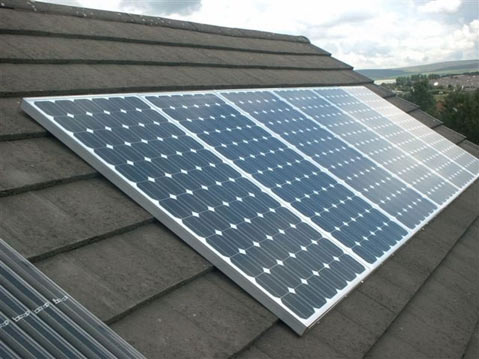Go Solar, Goleta!
It’s Easy

Those of us living in Goleta are so accustomed to great weather for most of the year that sometimes we fail to recognize how lucky we are. Take the sun, for example: We enjoy it almost every day and use it to get our incredible “California tan,” which is considered a luxury in other parts of the country.
Because we see a lot of sun, we tend to forget that this skin color-enhancing star is also the very largest source of energy we can take advantage of—especially if we want take better care of our environment.

Going solar is simple, and you can start by making your home energy-efficient. Visit Go Solar California to find out who can provide you a quick and easy audit, identifying ways you can reduce your home’s energy use before sizing and installing a solar generating system.
The way these systems work is pretty simple, according to Go Solar experts. Photovoltaicb(PV) power-generating systems turn sunlight into electricity. When sunlight hits PV panels, they generate a current that is converted into electricity. A PV system enables you to generate some, or all, of your daily electricity needs.
A special net energy meter tracks excess power generated, providing you with a credit that can be used when your system is not producing energy (e.g., at night). Your house remains connected to the electricity grid, so any electricity needs not provided by your system are automatically drawn from the grid and provided by your utility.
Going solar reduces your monthly electricity bill, and may generate energy for your home for 20 years or more. The electricity it generates is clean. The word on the street about solar technologies is that they are reliable, and they usually come with a 10-year warranty.
The logical question here is, how much does a solar-generating system cost? As you can imagine, the cost varies depending on the system’s size, equipment options, and labor costs. Typically, installation costs are determined based on the size of the system’s output. “Cost per watt” ($/watt) is often used for comparing systems of different sizes. The typical price range is $7-$10 per watt, so a thousand-watt system could cost $7,000 to $10,000. (To find out how many watts your home uses, check your current energy bill.) The average cost of a residential solar-generating system in California is $47,714. (See the California Solar Initiative Program Handbook of June 2010. It covers rebates for solar photovoltaics (PV) on existing homes and all other nonresidential properties.)
I also suggest you read the 1978 California Solar Rights Act, which limits the ability of covenants, conditions, and restrictions typically enforced by homeowners associations and local governments to restrict solar installations. Get more information on the California Solar Rights Act at www.gosolarcalifornia.ca.gov/solar_basics/rights.php. Let’s educate ourselves.
Think about it. It is a little silly to continue wasting the sun’s energy, which comes to us every day, free of charge.



